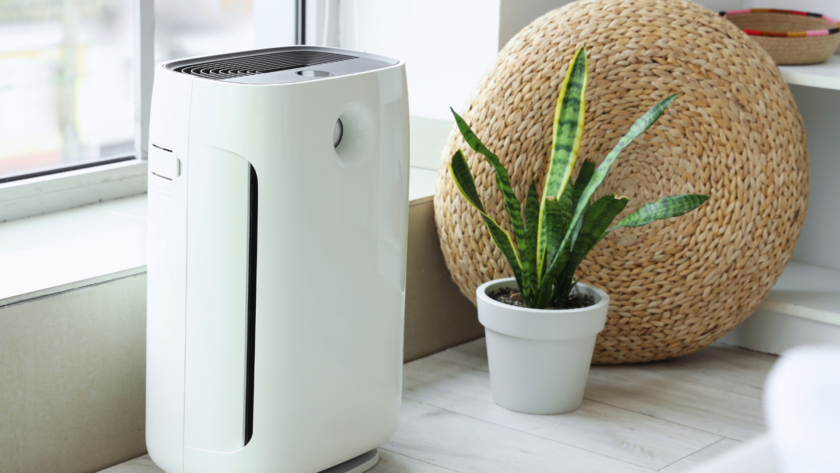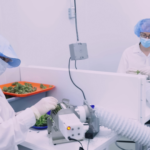In today’s world, many individuals unknowingly expose themselves to various toxins present in everyday products and environments. By making informed choices about the food they consume, the products they use, and their living spaces, they can significantly reduce their toxin exposure. Awareness is the first step toward a healthier lifestyle.
Common sources of toxins include personal care products, cleaning supplies, and even the food on their plates. Simple adjustments such as opting for natural alternatives and reading labels can empower individuals to take control. Understanding where these toxins lurk can lead to more conscious decisions that benefit both health and well-being.
Taking steps to detoxify one’s life does not have to be overwhelming. Small changes, like incorporating more organic foods, choosing eco-friendly products, and improving indoor air quality, can make a tangible difference. Addressing these aspects encourages a healthier, more sustainable lifestyle.
Understanding Toxins and Their Sources
Toxins are harmful substances that can negatively impact health. Recognizing their common types and sources is essential for reducing exposure.
Identifying Common Toxins
Common toxins include heavy metals like lead, arsenic, and cadmium, as well as pesticides used in agriculture.
- Lead: Often found in old paint and plumbing, exposure can cause neurological issues.
- Arsenic: This may occur in contaminated water and some rice products, linked to various health problems.
- Cadmium: Commonly found in batteries and some fertilizers, it poses risks related to kidney and bone health.
Pesticides can leave residues on food, affecting consumers directly. Monitoring these substances is crucial for minimizing risk.
Sources of Toxins in the Environment
Environmental toxins stem from industrial activities, agricultural practices, and natural sources.
- Industrial: Factories can release heavy metals and chemicals into the air and waterways, affecting local ecosystems and communities.
- Agricultural: Pesticides used to protect crops can leach into soil and water supplies, posing risks to human health.
- Natural Sources: Some heavy metals originate from the earth. For example, arsenic can be naturally present in groundwater.
Reducing exposure involves awareness and proactive measures to limit contact with these toxins and seeking out cleaner alternatives.
Strategies for Toxin Reduction in Everyday Life
Reducing toxins in daily life involves intentional choices in diet, personal care, and household products. Making informed decisions can significantly lower exposure to harmful substances.
Dietary Adjustments for Minimizing Ingested Contaminants
Focus on selecting organic fruits and vegetables to reduce exposure to pesticides and herbicides. These foods are often free from harmful toxins such as phthalates and other chemicals used in conventional farming.
Incorporating whole foods like grains, nuts, and seeds can enhance health while minimizing processed foods that may contain additives and contaminants.
Avoid canned foods when possible, as the linings can contain PFAS that leach into the contents. Choose fresh or frozen products instead, which are typically safer.
Additionally, consider using a water filter to remove heavy metals and other impurities from drinking water.
Reducing Exposure to Toxins in Personal Care Products
Selecting personal care items with fewer synthetic ingredients is crucial. Many beauty and hygiene products can contain carcinogens and phthalates that disrupt hormonal balance.
Read labels carefully and opt for products labeled “paraben-free,” “sulfate-free,” and “free from synthetic fragrances.”
Choosing natural alternatives, such as coconut oil for moisturizing or baking soda for deodorizing, can be effective.
For makeup, brands emphasizing natural ingredients and sustainability often provide safer options.
Researching the Environmental Working Group’s Skin Deep Database can aid in finding safe products.
Choosing Safer Household Cleaning Products
Many cleaning products contain harsh chemicals that can release harmful vapors. Opt for eco-friendly cleaners that use plant-based ingredients.
Common ingredients to avoid include ammonia, phthalates, and triclosan. Instead, utilize simple solutions like vinegar, baking soda, and essential oils for effective cleaning.
When shopping for cleaning supplies, look for certifications such as “Green Seal” or “EPA Safer Choice” that indicate a reduced environmental impact.
It is also wise to ensure proper ventilation during cleaning to minimize inhalation of any remaining toxins present.
These strategies can significantly help in reducing toxin exposure in everyday life.
Improving Air and Water Quality at Home
Enhancing air and water quality at home significantly reduces exposure to toxins. Strategies in air purification and water filtration can create a healthier living environment.
Air Purification Strategies
To improve indoor air quality, removing harmful particulates and toxins is essential. Consider using HEPA air purifiers that capture 99.97% of particles down to 0.3 microns, which includes dust, pollen, and some heavy metals.
Avoid using air fresheners that may emit volatile organic compounds (VOCs). Opt for natural alternatives like essential oils. Incorporating indoor plants can also help; plants like spider plants and peace lilies absorb pollutants and improve oxygen levels.
Regularly maintaining HVAC systems can prevent mold and dust accumulation. Routine filter changes and duct cleanings enhance airflow and minimize contaminants. Ensuring proper ventilation while cooking can also reduce indoor toxins.
Water Filtration Solutions
For water quality, a reliable filtration system is paramount. Activated carbon filters can effectively remove chlorine, sediment, and some heavy metals, improving taste and safety.
Consider reverse osmosis systems, which provide an additional layer of filtration, eliminating a broad spectrum of contaminants, including lead, fluoride, and nitrates.
Regular testing of water sources is advisable to monitor contaminants. Using water filter pitchers offers a convenient solution, but ensure filters are replaced on schedule for optimal performance.
Staying informed about local water quality reports helps in identifying potential risks and taking necessary steps to protect health.
Promoting Toxin-Free Communities
Creating toxin-free communities involves encouraging practices that support sustainable agriculture and advocating for robust environmental regulations. Both approaches play a critical role in reducing overall exposure to harmful substances in the environment.
Supporting Sustainable Farming Practices
Sustainable farming practices focus on methods that enhance ecosystem health while minimizing the use of harmful chemicals. Techniques such as integrated pest management (IPM) can significantly reduce pesticide reliance.
Key practices include:
- Organic farming: Utilizing natural fertilizers and pest control methods, limiting synthetic chemicals.
- Crop rotation: Reduces soil depletion and reduces the need for chemical interventions.
- Permaculture: Designing agricultural systems that mimic natural ecosystems can lead to healthier soil and less reliance on toxins.
By supporting farmers who adopt these methods, communities can foster food systems that prioritize health and sustainability.
Advocating for Stronger Environmental Regulations
Stronger environmental regulations are essential in limiting the use of harmful substances that contribute to pollution. Advocacy for policies that regulate pesticides and industrial chemicals can protect public health.
Key actions include:
- Supporting legislation: Push for laws that enforce stricter limits on toxic substances in agriculture.
- Promoting transparency: Encourage companies to disclose chemical use and practices openly.
- Community engagement: Mobilize community members to voice concerns and participate in local environmental decisions.
Through collective efforts, individuals can advocate for a healthier environment that limits exposure to environmental toxins.



